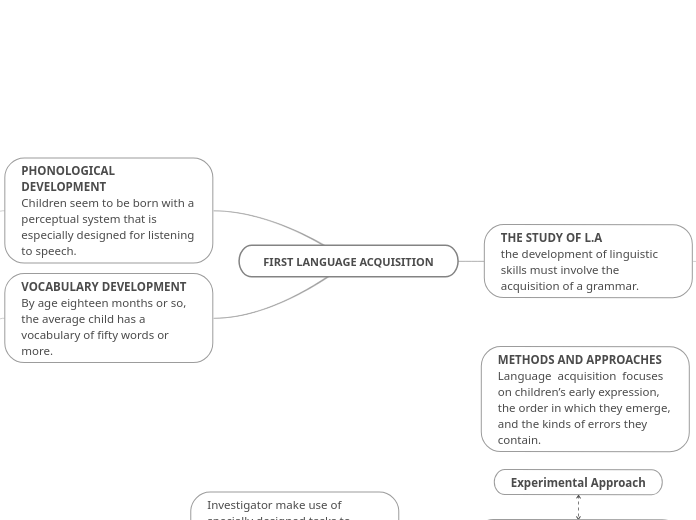FIRST LANGUAGE ACQUISITION
PHONOLOGICAL DEVELOPMENT
Children seem to be born with a perceptual system that is especially designed for listening to speech.
Newborns respond differently to human voices than to other sounds, they show a
preference for the language of their parents over other languages
THE STUDY OF L.A
the development of linguistic skills must involve the acquisition of a grammar.
A simple memorization of a list of words and sentences do not equip learners to understand unknown sentenses.
VOCABULARY DEVELOPMENT
By age eighteen months or so, the average child has a vocabulary of fifty words or more.
words that resemble nouns constitute the largest class in the early education of the child.
words similar to verbs and adjectives the next most frequent types of categories.
Among the most frequent words are expressions of disgust or rejection
